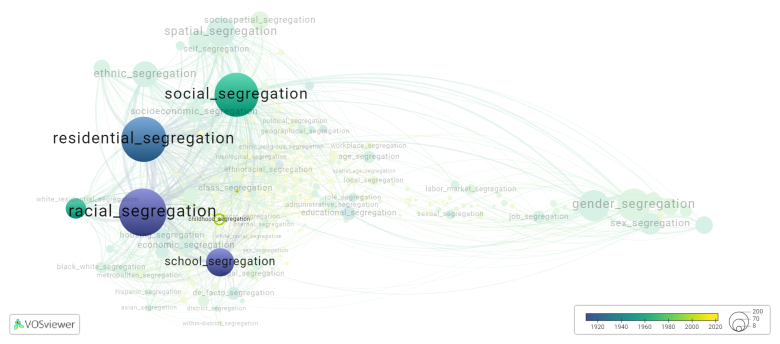Childhood segregation
Date and country of first publication[1][edit | edit source]
2006
United States
Definition[edit | edit source]
Childhood segregation refers to the practice of separating children or segregating them based on various factors such as race, religion, socio-economic status, or abilities.
Historically, childhood segregation has been most commonly associated with racial segregation, particularly in the United States during the Jim Crow era. African American children were often forced to attend separate schools, use separate facilities, and face discriminatory practices that denied them equal educational opportunities.
Segregation also occurred in other countries, such as South Africa during apartheid, where children from different racial or ethnic groups were assigned to separate schools and educational resources were unequally distributed.
In addition to racial segregation, children have also been segregated based on other factors. For example, some religious schools segregate children based on their religious beliefs, while private schools may segregate based on socio-economic status. In some cases, children with special needs or disabilities have been segregated from mainstream education and placed in specialized schools or classrooms.
Childhood segregation can have negative effects on children's overall development and social interaction. It can lead to feelings of exclusion, inferiority, and self-esteem issues, as well as limit opportunities for exposure to diverse perspectives and experiences.
Efforts have been made to combat childhood segregation and promote integration in educational settings. Legal actions, such as the landmark Supreme Court case Brown v. Board of Education in the US, have played a crucial role in desegregation efforts. Inclusion and diversity initiatives in schools aim to create inclusive environments that celebrate and respect differences among children.
While significant progress has been made in reducing childhood segregation, challenges and disparities persist in some regions. Ongoing efforts are necessary to promote inclusive education and ensure that all children have equal access to educational opportunities, regardless of their race, religion, socio-economic status, or abilities.
See also[edit | edit source]
Related segregation forms[edit | edit source]
Childhood segregation is frequently discussed in the literature with the following segregation forms:
racial segregation, racial residential segregation, school segregation, residential segregation, social segregation

This visualization is based on the study The Multidisciplinary Landscape of Segregation Research.
For the complete network of interrelated segregation forms, please refer to:
References[edit | edit source]
Notes[edit | edit source]
- ↑ Date and country of first publication as informed by the Scopus database (December 2023).
At its current state, this definition has been generated by a Large Language Model (LLM) so far without review by an independent researcher or a member of the curating team of segregation experts that keep the Segregation Wiki online. While we strive for accuracy, we cannot guarantee its reliability, completeness and timeliness. Please use this content with caution and verify information as needed. Also, feel free to improve on the definition as you see fit, including the use of references and other informational resources. We value your input in enhancing the quality and accuracy of the definitions of segregation forms collectively offered in the Segregation Wiki ©.
Childhood segregation appears in the following literature[edit | edit source]
Landrine H., Klonoff E.A. (2). Racial segregation and cigarette smoking among blacks: Findings at the individual level. Journal of Health Psychology, 5(2), 211-219. SAGE Publications Ltd.https://doi.org/10.1177/135910530000500211
Massey D.S., Fischer M.J. (2006). The effect of childhood segregation on minority academic performance at selective colleges. Ethnic and Racial Studies, 29(1), 1-26. https://doi.org/10.1080/01419870500351159
Ehrmann N. (2007). From the ghetto to the ivory tower: Gendered effects of segregation on elite college completion. Social Science Quarterly, 88(5), 1392-1414. https://doi.org/10.1111/j.1540-6237.2007.00508.x
Wang G., Schwartz G.L., Kershaw K.N., McGowan C., Kim M.H., Hamad R. (2022). The association of residential racial segregation with health among U.S. children: A nationwide longitudinal study. SSM - Population Health, 19(), -. Elsevier Ltd.https://doi.org/10.1016/j.ssmph.2022.101250
Schwartz G.L., Wang G., Kershaw K.N., McGowan C., Kim M.H., Hamad R. (2022). The long shadow of residential racial segregation: Associations between childhood residential segregation trajectories and young adult health among Black US Americans. Health and Place, 77(), -. Elsevier Ltd.https://doi.org/10.1016/j.healthplace.2022.102904
